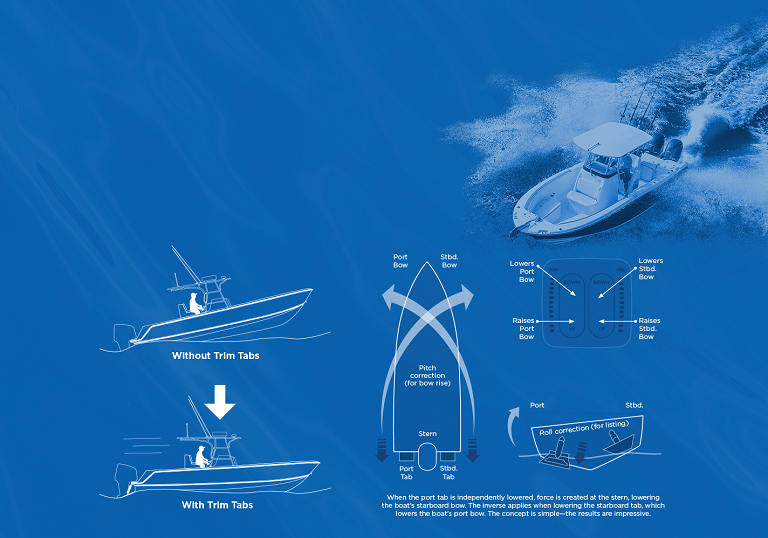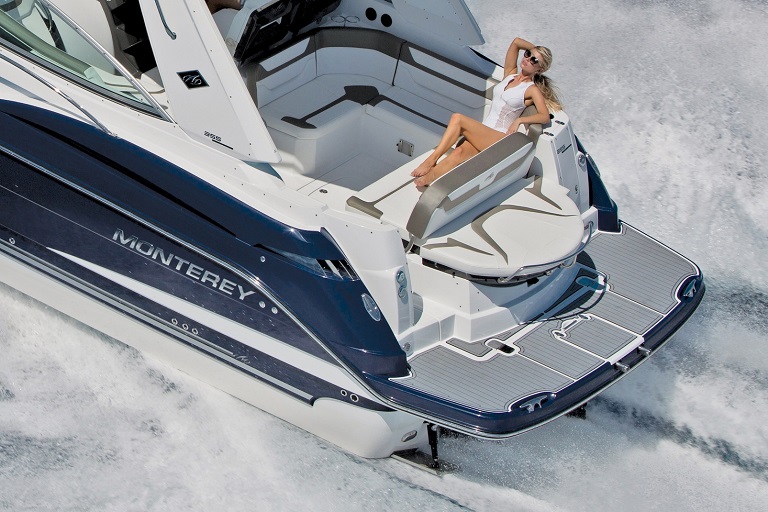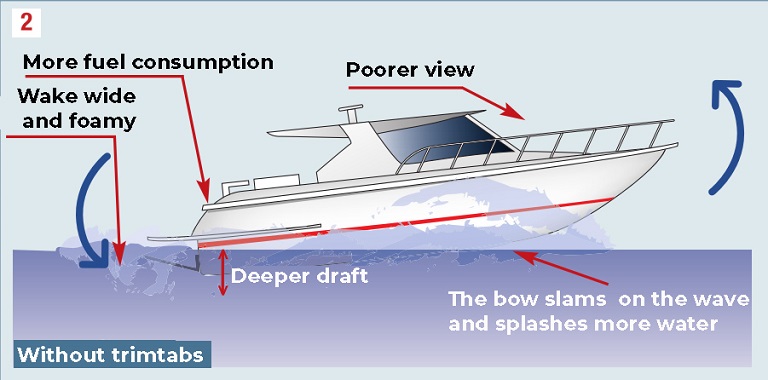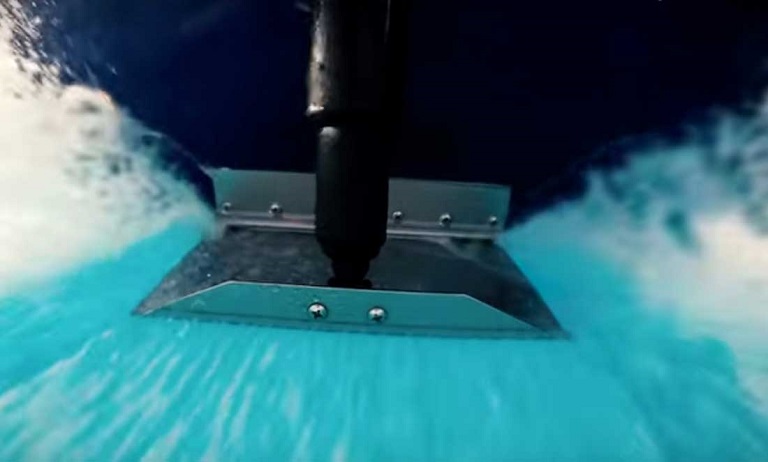Contents
Steering a boat and applying the throttle are things that new boaters master pretty quickly. What takes more experience is levelling the length of the boat to the angle of the water, or what is known as boat trim. Either the bow is too high, and disrupts visibility, and makes it difficult in picking up speed, or too low leading to possible swamping. Angle adjustment can be done through the propeller, in power trimming, but won’t be as effective or fast as a pair of separate boat parts called trim tabs.
What are Trim Tabs?

Trim tabs for boats are metal plates installed on the boat’s transom along the stern and are used to adjust the angle of the boat relevant to the water. They provide for safer steering and movement in different water conditions and work with the power trim from the propeller in getting the best results. Keeping the boat in the plane in which it achieves cruising speeds also helps take pressure off the propeller, meaning lower fuel use. Also, you’ll be able to make side-to-side adjustments to provide for even weight distribution. Trim tabs can be used together, or independently of each other.
Types of Trim Tabs

There are three basic types of trim tabs for boats. These are automatic, electric and hydraulic trim tabs.
Automatic Trim Tabs
Automatic or self-levelling trim tabs are installed on smaller boats, up to 20 feet in length, and function much like the independent suspension in your car. They automatically adjust the level of the boat plane according to the conditions on the water. Automatic trim tabs are easiest to install, with less work required due to fewer parts. This includes actuators for each trim tab and mounting hinges that fit the transom. No plumbing or wiring is required.
Electric Trim Tabs
Electric trim tabs use power from the marine battery to power two electric 12V actuators. These are wired to controls installed in the dash and move the tabs up or down with input from the skipper. The benefit of self-levelling tabs is the speed with which they operate. A pick press of the control buttons allows for immediate adjustment to the boat’s hull.
Hydraulic Trim Tabs
These are powered by hydraulic pumps that move the actuators up or down. Hydraulic tabs need the most work in installation, and are suited for larger, heavier boats. Like electric trim tabs, there are different types of controls in the dash or near the helm used to operate them.
Benefits of Trim Tabs

Trim tabs offer several benefits over boats that have to go without.
- Adjusting boat plane – The plane is the angle of the bow in relation to the surface of the water. If the bow is too high, the boat takes more time (and fuel) in picking up speed and in effect levelling the boat. A quick push of the controls lowers the bow. This is suitable both in low-speed or high-speed maneuvers and gives boaters better control.
- Correct listing – Listing is the movement of the boat left to right, or more precisely port or starboard tilting. It is caused by the uneven distribution of weight on the boat, and makes steering the boat dangerous, especially in rougher seas. Trim tabs for boats correct listing quickly, and help you safely get out of tight situations.
- Correct for porpoising – Porpoising is the bow repetitively jumping up and down when the boat is moving at higher speeds. This is also a dangerous situation which if not controlled can swamp the boat. Small adjustments to push the hull down level the boat and help maintain or even increase speed.
Correcting the position of the bow contributes to improvements in performance, better fuel efficiency, higher comfort levels and increased safety. Trim tabs give boaters better control over the boat in different sea conditions, and at different speeds. They can be adjusted individually or at the same time. Trim tabs also work along with the power trim from the propeller to reduce hull drag when taking off, so less fuel is wasted. Less swaying or abrupt movement means passengers on board can remain where they are and enjoy the ride.
What to Look for in Trim Tabs

Choosing the right trim tabs depends on the level of adjustment you need and the length and weight of the boat. Here you need to pay attention to proper sizing. Bigger trim tabs cover a bigger area, so need to work less than smaller trim tabs to lift the boat to the same height. Measurements to look for are trim tab span, or the side to side width, and chord or the length from front to back. A 6-metre boat needs a trim tab with a 25cm span and 30cm chord. Span increases with boat length. A 15-metre boat hence needs a trim tab with a 130cm span and 23cm chord to lift the extra weight. Correct sizing affects overall usability, speed, and control. Trim tabs for boats, along with controls, wiring, and mounting kits are sold in better boating stores across Australia.

